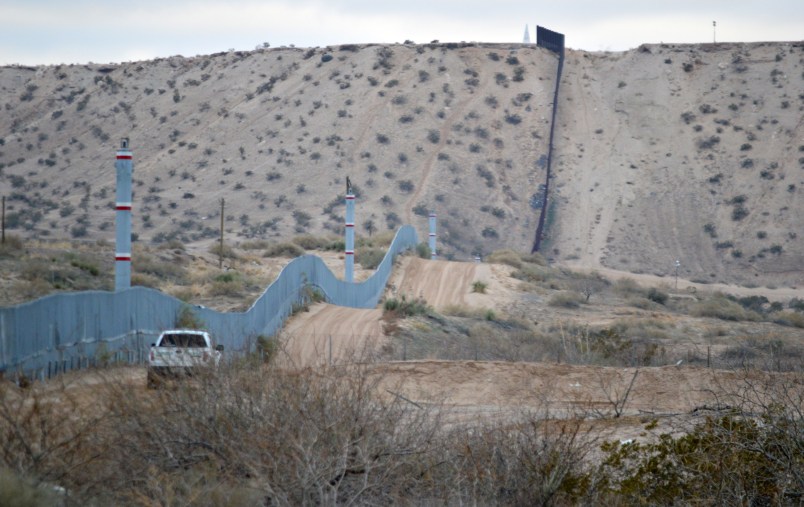WASHINGTON (AP) — Congressional Republicans and Donald Trump’s transition team are exploring whether they can make good on Trump’s promise of a wall on the U.S.-Mexico border without passing a new bill on the topic, officials said Thursday.
Under the evolving plan, the Trump administration would rely on existing legislation authorizing fencing and other technology along the southern border. Congress would be asked to ensure that enough money is appropriated to take additional new steps — but would not pass a stand-alone bill authorizing a big new wall. CNN separately reported that Trump would ask Congress to appropriate US tax payer money to pay for the “wall”.
The potential approach was confirmed by two congressional officials and a senior transition official with knowledge of the discussions; all spoke on condition of anonymity because they were not authorized to discuss the matter publicly. The officials emphasized that no final decisions had been made.
The approach could come as a surprise to some but could avoid a legislative fight Trump might lose if he tried to get Congress to pass a stand-alone bill authorizing the kind of border wall he promised during the campaign.
It’s not clear how much could be done along the 2,000-mile border without additional actions by Congress. Lawmakers passed the Secure Fence Act of 2006, but most of those 700 miles have already been built. Some areas are in much better shape than others, though, and long stretches are made up of fencing that stops vehicles but not pedestrians.
But whatever steps might be taken without Congress’ approval would be likely to fall short of the extravagant new wall on the border that Trump repeatedly said Mexico would pay for. And despite Congress’ involvement in approving any spending, such an approach might also open Trump to charges of going around the House and the Senate to take unilateral actions, something he repeatedly criticized President Barack Obama for doing. A spending bill including money for border construction could also provoke a legislative showdown given potential opposition from Senate Democrats.
Still, several lawmakers and congressional officials said the administration could have significant flexibility in taking additional steps without Congress’ approval.
“There’s a lot of things that can be done within current law,” said Rep. Mario Diaz-Balart, R-Fla., a longtime proponent of comprehensive immigration reform, though he emphasized that a lasting solution on immigration would take Congress. “You cannot minimize the potential impact of the administration doing what they can do under the law.”
However, some immigration hard-liners have already expressed the desire to see Congress take a vote given how prominent the wall was during Trump’s presidential campaign, and their desire to act on the issue.
Trump’s vow to build an impenetrable, concrete wall along the southern border was his signature campaign proposal. “Build the wall!” supporters would chant at his rallies. “Who’s going to pay for it?” Trump would ask them. “Mexico!” Trump often promised the wall would be built of hardened concrete, rebar and steel as tall as his venues’ ceilings, and would feature a “big, beautiful door” to allow legal immigrants to enter.
Most experts viewed such promises as unrealistic and impractical, and Trump himself sometimes allowed that the wall would not need to span the entire length of the border, thanks to natural barriers like rivers. After winning the election, he said he’d be open to stretches of fencing.







Not even sworn in yet. Feeling duped yet, Trump voters?
Yes, first President ever to have negative approval ratings in the works before he even takes office.
Not to worry …
Donnie is just going authorize the Border Patrol to " Shoot on Sight " —
Blame Congress and say it’s cheaper … HERO ! —
Ridicule is the best offense with these people . DO NOT normalize them. In no reality are they anything but jokes…
If the GOP thinks this is a winner, I say Go For Broke. Because I don’t think it’ll work out as they fantasize. But, hey, it’s their project and I’ll be happy to watch them squirm and take the heat when it falls short of what the Trumpkins expect or ends up costing the US a huge bundle or just fails altogether.